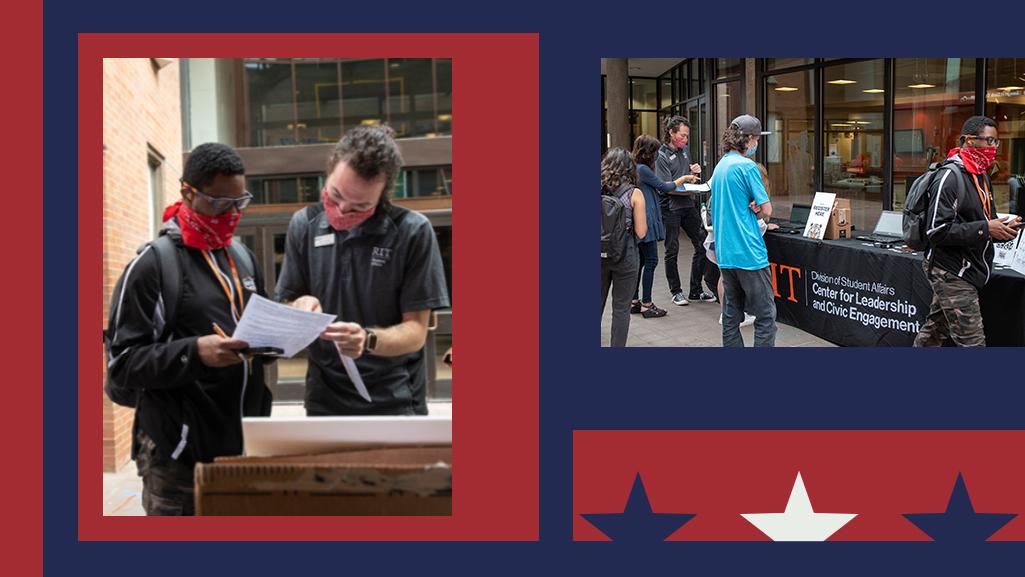As technology gets better and pandemics get worse, we rush to the internet for a sense of connectedness that we lack in the real world. We go online to talk to others, laugh, argue or mindlessly scroll through the endless amount of content.
With the recent presidential election of Joe Biden, it seems many of us can’t escape political content in particular. For instance, in late January 2021, our feeds were filled with the Bernie Sanders meme where he sits at the inauguration with his mittens and crossed legs.
Former President Donald Trump also seemed to “dabble” in viral content. He is known for many controversial tweets that ended up getting him banned from Twitter in early January 2021, according to CNN.
CNN quoted Twitter, “After close review of recent Tweets from the @realDonaldTrump account and the context around them we have permanently suspended the account due to the risk of further incitement of violence.”
Some think this ban infringes on Trump’s First Amendment right to free speech. RIT associate professor of Political Science, Benjamin Banta, begs to differ. He thinks this ban is the step in the right direction of curbing the amount of extreme content that seems to gain traction online.
“To me, that [the Twitter ban] is not a First Amendment issue. It’s clearly not a censorship issue. It’s a community standards issue … it’s a group of people deciding what’s appropriate or what’s not,” Banta said.
“It’s a community standards issue … it’s a group of people deciding what’s appropriate or what’s not.”
The more years we spend with the internet, the more we come to realize it can be quite a toxic place. What were once feeds solely filled with Nyan Cat and the Annoying Orange are now feeds also filled with extreme content.
What Is Extreme Content?
Extreme content can be anything from political propaganda, fake news, abusive content, conspiracy theories and more.
John Sohrawardi is a third year Ph.D. student in the Department of Computing and Information Sciences who has done a great amount of research on extreme content online. In particular, he focuses on fake news and “deep fakes.”
“I primarily work with journalists on the new detection of deep fakes and how they verify fake news … they [journalists] are like the first line of defense against fake news because they are the ones that verify and publish it,” Sohrawardi said.
However, Sohrawardi explained that this first line of defense is having a tough time in battle.
“Deep fake technology has grown to levels where nobody with a normal observation can be able to tell whether it’s fake or real,” he continued.
This means that information that goes viral is not always factual, yet people will still continue to share and believe in it.
As Sohrawardi explained, people want to believe in things that support their bias. This means overlooking credibility to promote their viewpoint. Yet, why are we now seeing so much more of this extreme content?
Why Is Extreme Content Prevalent?
Social media algorithms are partially to blame in the rise of extreme content. Social media platforms are profit driven — they want to keep their users engaged.
These algorithms will track their users through clicks and hovers in order to guide them to new content that aligns with their tastes.
Sometimes these algorithms are harmless and will lead you to more of those cat videos you love. However, Banta explained it’s usually content that angers and riles us up that we end up interacting with.
“It’s the extreme, angering stuff that keeps people online,” Banta stated.
“It’s the extreme, angering stuff that keeps people online.”
This means our emotions and outlook on life can also be to blame. It is the content that most people are more likely to watch , so it’s the content that is produced the most.
As Banta said bluntly, “The media empire has been successful purveyors of
However, it’s important to note that the media is not this evil giant trying to feed us more and more extreme content. As Banta explained, this is a naturally occurring process. It’s a give and take between viewers and the media.
Sometimes these viewers are simply bots and trolls on the internet trying to make a buck by sharing extreme content.
Banta recalled back to an article he read after the 2016 election. The Washington Post found purveyors of fake news and discovered that they purposefully shared false information. They were throwing extreme propaganda online in hopes to gain traction and money.
“Fake news is just this phenomenon of people trying to make money off of fake articles,” Banta explained.
With there being so many ignitors of extreme content, it doesn’t seem likely that change will occur.
As Sohrawardi said, “You have to just get used to this new age of information.”
Luckily, not all hope is lost quite yet.
A Gleam on Our Screens
Sohrawardi noted that many platforms are trying to restrict the amount of extreme content by using technology and humans side by side. This new duo monitors and tracks content on their platforms, and ciphers out anything they deem unacceptable.
As Banta explained, at the end of the day these platforms care about their image. They will lose customers if their platform seems too hateful.
Younger generations are also becoming more tech savvy and strong willed. They are less likely to stand to extreme content, especially that which is hateful.
“I grew up in the ’90s where we were all fat and happy and stupid. There was nothing like what we’re facing today,” Banta recalled.
So extreme content may even die down naturally as this generation comes to rise. For now, all we can do is stay alert to what we give fire to online.







